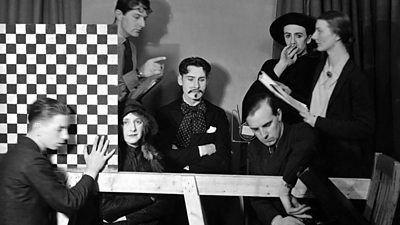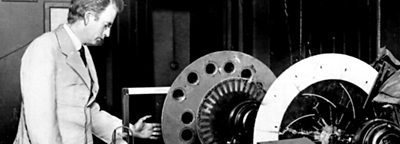Humanityâs deep desire for connection means the idea of seeing images at a distance has a long history. But it was in the 1920s that fantasy became a reality. And when it did so, there was no single 'inventor' of television. A large number of experimenters, entrepreneurs, and public organisations were involved â though not, at first, the ±«Óătv.
The theoretical basis of television â working out how electricity might interact with the photo-sensitive properties of chemicals - had been laid down in France, Germany, Russia, Hungary, and the USA by 1900. But the problem remained of how to break an original image into small sections so that they could be transmitted separately, though simultaneously, before being âreassembledâ at a distant receiver. And it was in Britain that a âmechanicalâ approach to this problem was pursued with the most striking results.
In 1924, a young Scottish engineer, John Logie Baird, developed a way of passing a beam of light through a rapidly spinning disc punched with holes, so that a simple image could be âscannedâ, transmitted, and reconverted. He can be seen at work in this fragment of film from the mid-1920s:
If Bairdâs machinery looks rather improvised and Heath Robinson-like, thatâs because it was. A friend described visiting his Hastings attic workshop and seeing an apparatus made up of an old tea-chest, an empty biscuit box, hat-boxes, cardboard, darning needles, and scrap timber - all held together with glue, sealing wax and string, and balanced on a washstand. By April 1924, though, this bizarre contraption did allow simple outline images of a Maltese cross and various letters of the alphabet to be transmitted two or three yards. And, after the inevitable flurry of press attention, Baird raised enough money to move his operation to London.
The following year, the retail impresario Gordon Selfridge invited Baird to demonstrate the new âattractionâ at his Oxford Street department store. And a few months later, the Post Office licensed Bairdâs fledgling company, âTelevision Limitedâ, to conduct short experimental transmissions from a succession of West End premises.
Thereâs a rare eye-witness account of this work in the ±«Óătv Oral History collection. Tony Bridgewater, who would later be in charge of some of the Corporationâs major pioneering outside TV broadcasts â including the 1937 and 1953 Coronations, and the 1948 Olympics â was a young Post Office engineer who joined Bairdâs company in 1928. Here, in a 1983 interview, he gives a vivid description of the inside of Bairdâs Covent Garden studio âhighlighting the technical challenges he and his fellow engineers then faced:
Although the Baird company was already trying to sell receiving sets â or âtelevisorsââ very few were being bought. Television was still largely a laboratory experiment. Any âlookers inâ â as they were called â were fascinated by the idea, but generally unimpressed with results. As Tony Bridgewater points out, image and sound couldnât yet be combined in one signal. The quality of pictures had also improved only marginally from the Hastings days. Some sense of light and shade was conveyed, but otherwise all that could be seen most of the time was a tiny, faint, static and constantly flickering image of a dummyâs head placed in front of the studio camera.
Bairdâs own interest was with how television worked, not in what it should show. But by the end of the decade others were turning their mind to developing the âartâ â not just the science â of television. On the afternoon of Monday, 14th July 1930, a ±«Óătv producer Lance Sieveking, already famous for his experimental radio features, directed the first television play in Britain: a production of Luigi Pirandelloâs The Man with the Flower in His Mouth.

Sieveking used the play to work-out how some of the basic âgrammarâ of television, which we now take for granted, might be achieved with very limited â and highly temperamental - technology. He discovered, for instance, that sliding a large checkerboard in front of the camera allowed scene changes to take place. He realised that two actors could fit into the same small screen area if they sat just an inch or two apart, and one and was shot over the shoulder of the other. He even worked out that for an actorâs face to be picked-up properly by receivers, yellow face make-up - with strokes of blue or dark green for emphasising contours â had to be used.
No footage exists of the original 1930 production. But in 1967, the Inner London Education Authority arranged for Sieveking and some of his original cast members to be reunited for a reconstruction using identical equipment:
The July 1930 broadcast was witnessed by The Times. It was clearly underwhelmed by the technical quality:
You feel yourself to be prying through the keyhole at some swaying, dazzling exhibition of the first film ever madeâ. Yet, it concluded, âthe afternoon will prove to be a memorable one.
Despite everything, the audience was gripped - not so much by what theyâd seen âwith their physical eyesâ as by what theyâd seen with their mindsâ-eyes. It was a prophetic vision of something astounding just round the corner.
Before any more progress could be made, however, there needed to be a radical change of direction in the underlying technology of television - and the decisive, if belated, intervention of the ±«Óătv.
-
First published in 1972, ±«Óătv Publications ©1972. PDF version with thanks to Nick Cutmore and Philip Laven.

